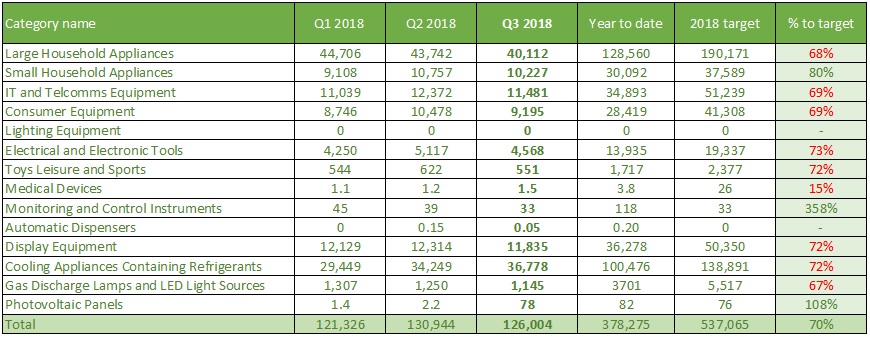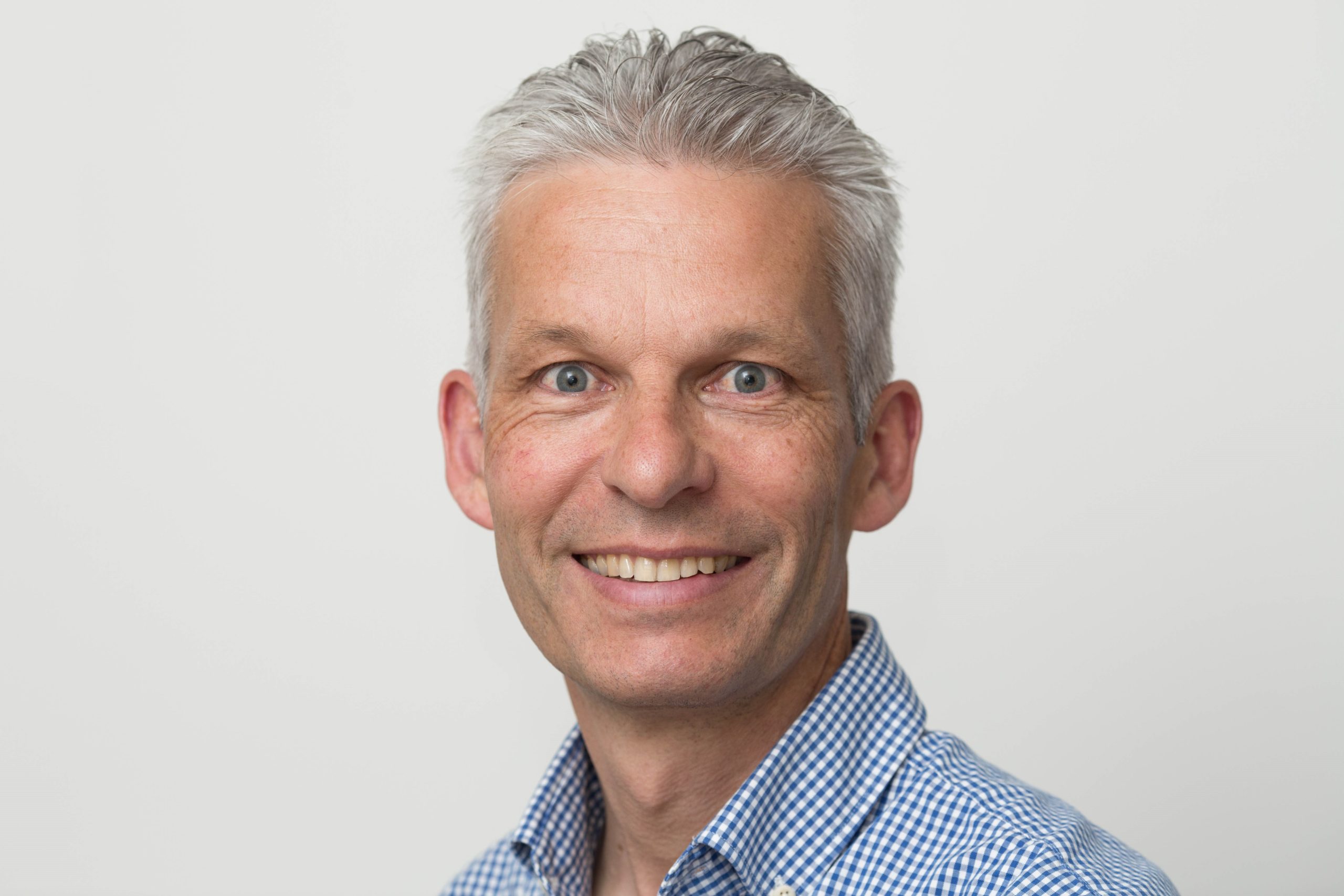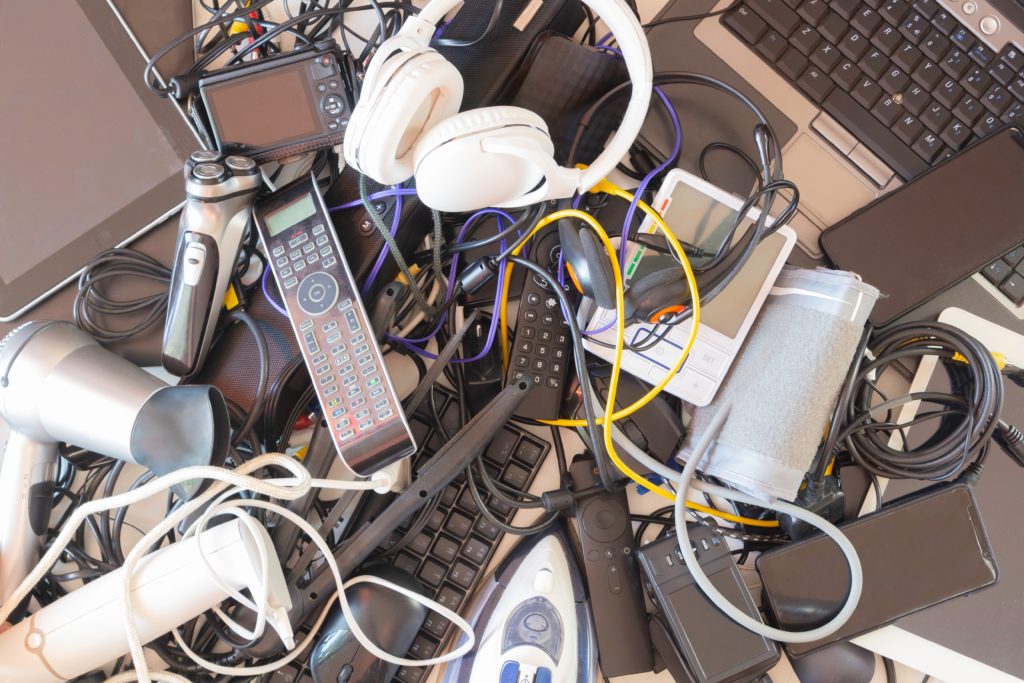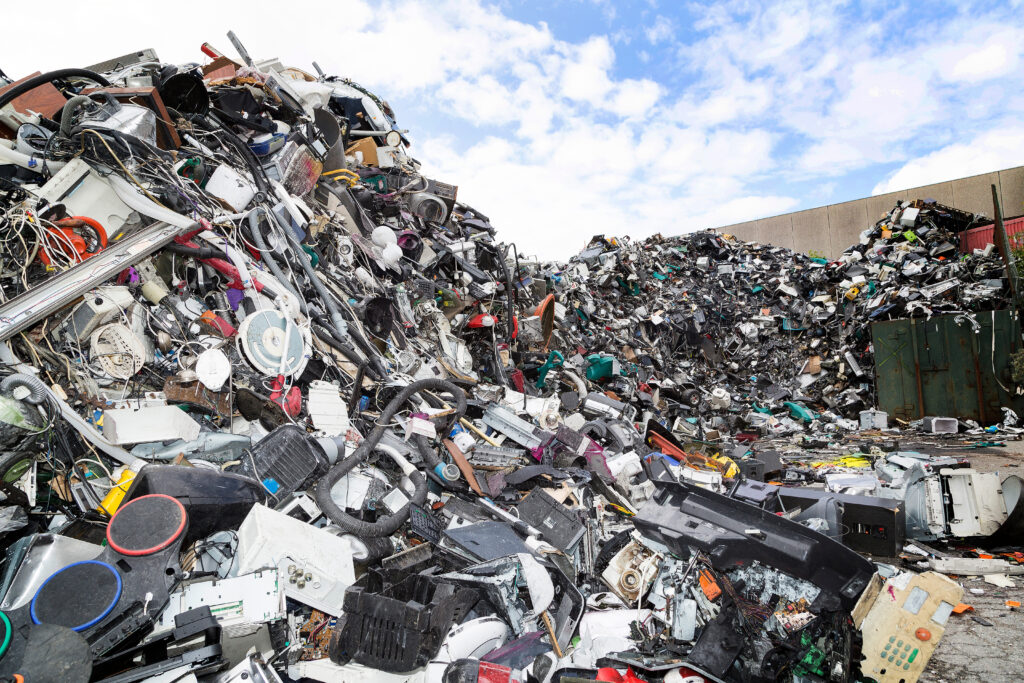The latest figures for the collection of waste electrical and electronic equipment (WEEE) were published by the Environment Agency this week, covering the three months to September 2018.
According to the data, a total of just over 126,000 tonnes of WEEE was collected in the third quarter of 2018, from sources including local authority civic amenity sites.
In order to be on track to meet targets for the year, a collection rate of around 134,000 tonnes of material per quarter would be required.
Instead, the latest numbers suggest that the collection rate for WEEE has fallen, dropping from a rate of around 130,000 tonnes recorded in the preceding quarter of the year, and down from around 135,000 tonnes in the same period (Q3) in 2017.
In total, compliance schemes have collected the equivalent of 70% of the overall target so far this year, and with Q4 data traditionally lower than the other quarters, it is thought likely that for some schemes, a compliance fee will be needed to make up for the shortfall.

If schemes cannot meet their individual targets to contribute to the overall collection rate they are required to pay into the compliance fee fund to ensure that they have met their recycling obligations for the year.
A total of £8 million was collected through the 2017 WEEE compliance fee fund – after the overall target was missed by around 100,000 tonnes.
Although it is unlikely that a shortfall in 2018 will be as large as that seen in 2017 given progress to date, it would still represent a blow if targets were not met in consecutive years.
Targets
Following the release of the figures, Mark Burrows-Smith, chief executive of the compliance scheme REPIC, said: “Current projections indicate that it is unlikely the 2018 compliance targets will be met in each category.
“Current projections indicate that it is unlikely the 2018 compliance targets will be met in each category.”
Mark Burrows-Smith
Repic
“The main shortfall in collected WEEE is for Large Household Appliances, which due to its inherent value, is attractive to collectors outside the PCS system. This is also evidenced in a slight increase in non-obligated LDA received at AATFs compared with 2017,” Mr Burrows-Smith explained.
He added: “It is encouraging to see that the WEEE Compliance Fund will be used to improve data on unreported and unexplained WEEE flows.”
‘Concern’
Robbie Staniforth, policy manager at Ecosurety, said it is “concerning” that the targets look likely to be missed again.
“Despite adjustments to WEEE targets from Defra last year, it seems that the industry are still running slightly behind for Q3, with 70% of our annual target so far accounted for,” he explained.
Mr Staniforth added: “This is concerning – it suggests producers may again be forced to use the compliance fee in order to hit their targets. However, it remains to be seen whether these low figures are caused by issues of material supply, or simply a failure to report.
“If the latter, then the industry may need to consider ways to simplify the system to encourage more material to be reported through the regulatory mechanism. The need for ‘substantiated estimates’ to hit targets is sub-optimal.”
Display
This was echoed by John Redmayne, managing director of the European Recycling Platform (ERP), who explained that a decline in collections of most streams WEEE streams compared to 2017 shows that the compliance fee is likely to be employed again in 2018.
“The significant decline in display collections which has been seen in recent years seems to be continuing [down 15% from last year],” he said.
Mr Redmayne added: “When we look at progress in WEEE collected against the 2018 targets set by Defra it appears that all streams are tracking slightly below the 75% that would, in simple terms, be expected.
“When we look at progress in WEEE collected against the 2018 targets set by Defra it appears that all streams are tracking slightly below the 75% that would, in simple terms, be expected.”
John Redmayne
ERP
“However, as collections of all streams tend to be lower in Q4 these progress figures suggest that there will be shortfalls in volumes of all streams (apart from PV) against the targets and that there will again be a need for government to approve use of a Compliance Fee,” he added.
Total tonnages have continued to fall from 2017, but Defra did lower the collection targets for 2018 as well.
Lamps
From a lamps perspective, Nigel Harvey, chief executive of Recolight, said it will be looking at new ways to capture a greater tonnage of material, with targets looking tricky for 2018.
“After nine months, the lamps collection data is showing a shortfall against pro-rata target of 10.5%. The volatility in lamp collections is in part caused by the shift from fluorescent to longer lasting LED technologies, and the gradual adoption of integrated LED luminaires, which do not have replaceable lamps,” Mr Harvey said.
He added: “That said, it is inevitable that not all waste lamps are collected, so in 2019 Recolight will be investing in new approaches to lamp collections to capture a higher percentage of lamp waste arising.”
Related Links
Waste electrical and electronic equipment – collection data













Subscribe for free